Every piece of art has a story to tell–and often, that story begins in the artist’s studio, from an in-home loft covered in works-in-progress to a shared space full to bursting with the tools of the trade. We spoke with five artists about their unique spaces, the way they work and how their environments inspire them.
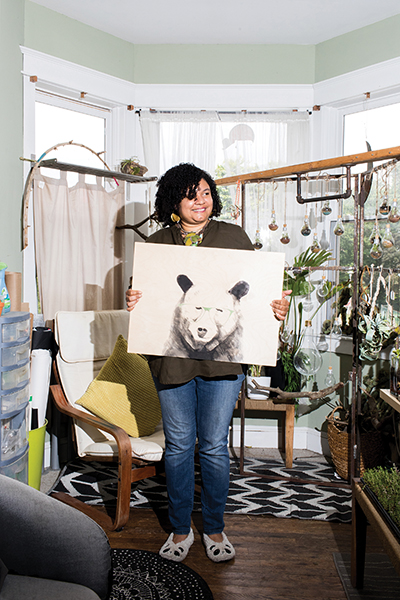
GROWTH POTENTIAL
Monique “Nik da Pooh” Langley has been breathing new life into recycled materials for as long as she can remember.
“If I was bored, my grandmother would give me plastic spoons and that hairy stuff from corn and say, ‘Go make a doll,’” she remembers.
Since then, her love of “clean trash” (her grandmother’s term for recycling) has evolved into the ultimate in reprocessing—creating paper plants. She began creating the pieces and her own unique “species” after finding the specimens in local nurseries not well-cared for…and causing her to honor her dead-plant replacement policy far more often than she hoped.
“I feel that each time I make one, I’m re-growing a plant,” she says. “This poor paper died, and it wants so badly to turn back into a plant. I’m helping it do that.”
Langley’s connection to the natural world factors heavily into the curation of her studio as well. The sunny space serves as a nursery for sick plants as well as healthy ones, which she says are her muses. Reclaimed wood, crystals and other natural elements help balance the energy, promoting a necessary sense of calm for the artist. After all, as a wife, mother of two and caretaker for her grandmother, she says cultivating a good vibe is key.
“My rule in here is positivity. I don’t want to hear gossip, I don’t want to see silliness,” she says. “This is my sanctuary. I struggle with keeping my own identity and doing what I love to do and feel I need to do and being the mom that I would want—someone kind and nurturing who cooks and gardens and trying to be a good example for them. I’m going through my own regrowth, and this studio lets me do that.”
HOME BASE
By the time Maxine Taylor made her way to Butchers Hill in 1996, art was just about the only thing on her mind.
“I was asking around about places, saying to my art friends, ‘I don’t want a house I want to live in, I want a bigger studio!”
Luckily, she found both, in the form of a converted arabber stable she now uses as home, studio and gallery—though living where she works has its disadvantages.
“The idea was that I’d be confronted by my art both finished and unfinished, but I’ve just become more accustomed to it,” she says. “I don’t see it as much anymore.”
The unexpected immunity is just another reason for her “mind over matter” approach to creation. Despite her assertion that her art is borne of an unexplained feeling within her, Taylor says she’s “pretty practical” about the way she works, beginning at around 10 a.m. and working up until she goes to bed on her art, administrative gallery tasks and her forthcoming community arts nonprofit.
The artist, who has transitioned through a number of phases from landscapes to found-object art to her latest, abstract three-dimensional collage, generally has about three or four pieces in process at a time.
“I had this one collage out all winter,” she says. “It’s pretty close to being finished now, but I just sit in front of it and drink tea every morning.”
Taylor says there are some pieces she just can’t figure out, which are eventually relegated to her archives and may be brought out later and repurposed in collage or otherwise, but she doesn’t get discouraged.
“I have over twelve hundred pieces in my inventory,” she says. “There are too many that I feel good about to get upset about one that I don’t.”
WORK FLOW
“I don’t think I would play well with others in a studio situation,” says René Treviño with a laugh.
He’s referring to the art of others, which he says he doesn’t display because he would find it distracting. But in reality, the genial artist is playing with others all day. Take his cats, Nacho, Chaka Khan and Pedro, for example—despite two near-ruinous incidents involving hairballs and paw prints, Treviño loves having his feline friends around.
“They make me laugh every day and they do animate the space,” he says. “They fill me with so much happiness.”
Other faithful companions? His large collection of cacti and other plants.
“The other day, I was telling my husband that I’ve had some of these plants longer than we’ve been together,” he says. “I love that we have history, that they’ve always been in my creative space, that they’ve watched me struggle and grow. That sounds cheesy because they’re plants, but I do feel their life force in some way.”
Even his husband, Paul, is welcome in the space—“to a point!” Trevino says. According to the artist, eleven years of being “dragged to” art openings, lectures and more have made Paul an expert in the arts and a valuable sounding board.
Despite this steady flow of visitors (animate and otherwise), Trevino admits his art can be isolating at times.
“Sometimes I get a little stir crazy,” he says. “But because this space is here and because sometimes the work that I do is literally about labor, I can usually just dive into the work…though there are other times when I do have to talk myself into it.”
Sometimes he commits 15 hours a day to his studio, in part because of the innate urgency of his work.
“What I’m trying to do is create a language that combines ancient imagery with contemporary ideas, something that feels representational of an experience like mine,” he says. “I’m such a consumer of popular culture, it’s frustrating for me not to feel represented.”
CREATURE FEATURE
While most of us have spent our lives avoiding monsters, Jennifer Strunge has spent hers creating them—well, at least since 2004, when she sewed a series of otherworldly puppets for a final project at MICA. Strunge says people were drawn to the creatures, asking if she would be willing to craft custom pieces. Thus, Cotton Monster was born.
Her sunny studio, nestled into a two-story home in Baltimore’s Arcadia neighborhood, is as colorful and creepy-cute as the plush monsters crafted there. Piles of eyes and snaggly teeth, made in batches, lay haphazardly across Strunge’s desk, ready to be affixed to the next “breed.” Swatches of fabrics and colors, from children’s sweatpants to pieces of a blanket, overlap in duos and trios throughout the room, serving as test combinations and bits of inspiration.
“I usually work intuitively,” she says. “I don’t use patterns. My designs change based on the colors and the fabrics.”
Other motivation comes from her carefully curated surroundings: the rainbow wall, of course, but also pictures of her cats, piles of old high school mixtapes and other sentimental trinkets. As she puts it, “my studio is the place where nostalgic things come to live.”
While whimsy sometimes fuels Strunge ‘s creations (which she refers to as “soft sculptures”), her fabrication process is more methodical. She’s an early riser, up by 7 and in the studio by 8:30, podcast on to “keep [her] company” as she sews. Different monsters take different amounts of time, of course, but she says she rarely gets tired of the work.
“I’m pretty fond of the monsters, but I think I’d have to be,” she says. “And I’ve made the studio into a place that I enjoy entering every day.”
WELL-PLACED
“I kind of had a crush on Baltimore,” says sculptor Kevin Rohde of his decision to apply for a residency in Charm City. “I’ve always had a thing for this town.”
That means a lot coming from Rohde, who has exhibited and served as an artist-in-residence across the globe. It’s perhaps these extensive travels that have informed what he considers the underlying theme of his oeuvre.
“What I’ve been focused on for a while now is a sense of place,” he says. “What is a home? A sleeping bag, clothes, even just the human body—a home could be just that.”
Or, well, a studio. Rohde has called Baltimore Clayworks home for the past four years, sharing a communal space with a rotating cast of ceramics artists (and their radios—though he prefers the drama of opera, the sculptor says he enjoys discovering others’ tastes). Though Clayworks closed in July, Rohde still aspires to work alongside other artists.
“I get energy from the people around me,” he says. “And there’s definitely influence there— the people who make work that’s so very different from yours can influence it the most.”
His recent work has focused heavily on the existence of 3D work (sculpture) on a 2D medium (screens). The result? An increased emphasis on the environment surrounding his figures—something even he finds a bit surprising.
“I started sculpting the figure because when I was painting, I never knew what to do with the background,” he says. “I felt pressure at the time to have some sense of environment. I couldn’t figure it out, so I ended up taking a sculpture class because I didn’t have to deal with the background. Now, I’ve kind of come 360 degrees. I’m very focused on anatomical correctness, but I don’t want a piece to just be that. There’s so much more you can bring to it.”


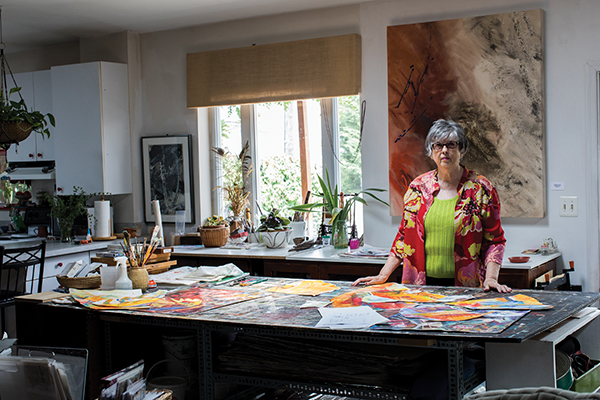
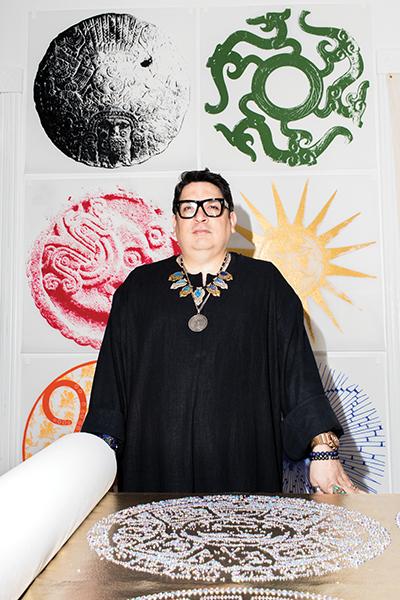
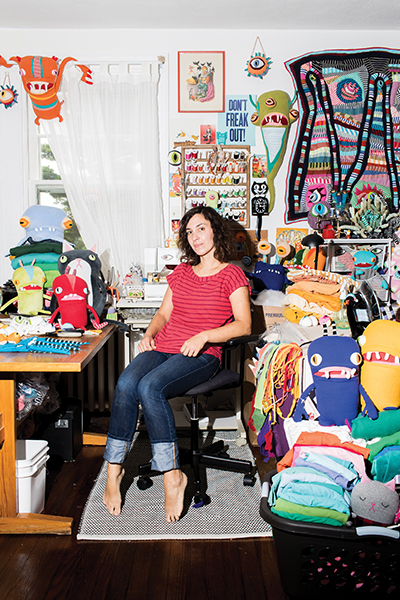
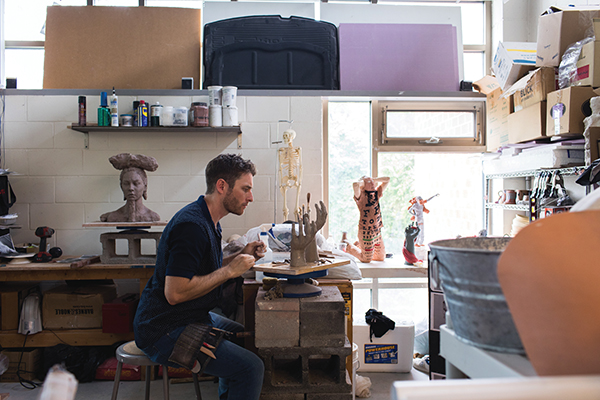
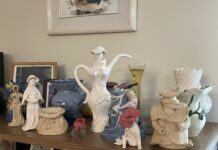


This is an outstanding article about three great artists i. Their own right. So proud of all of you.
Blessings to my Daughter , Monique Langley.